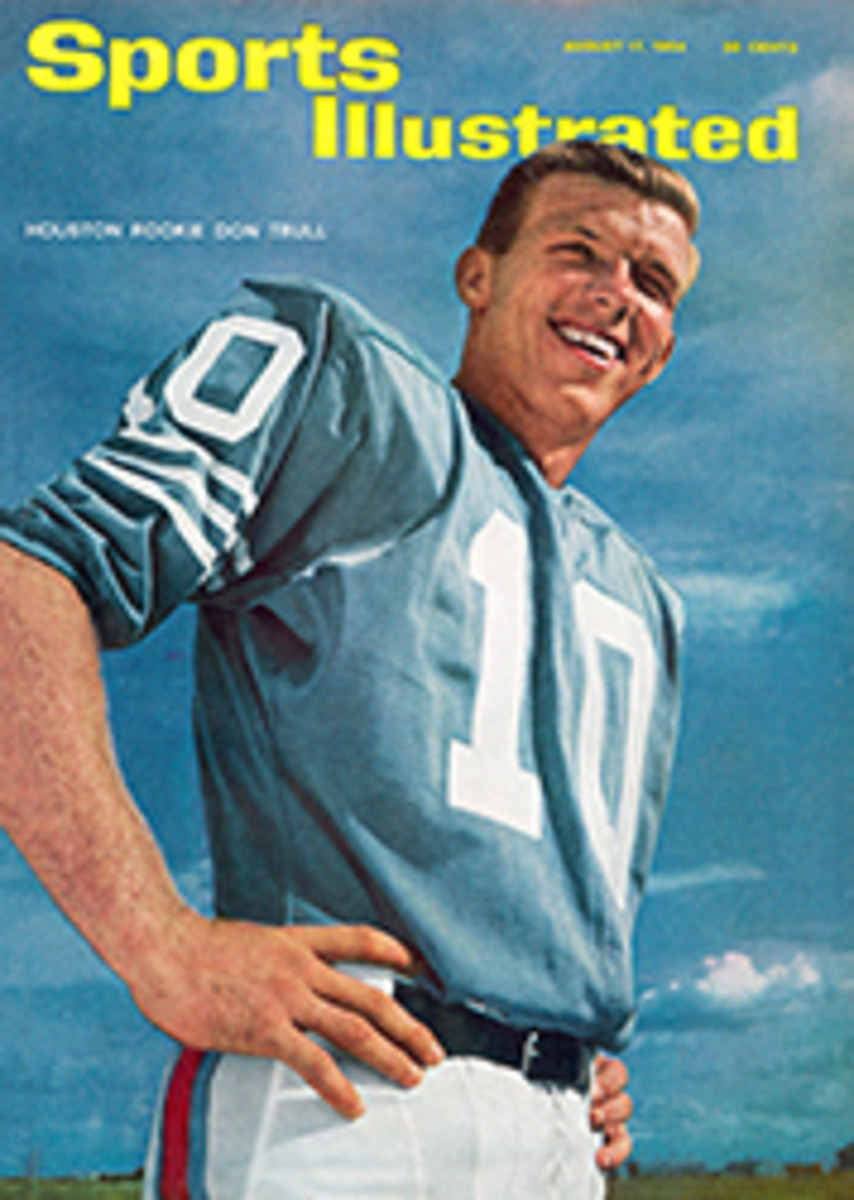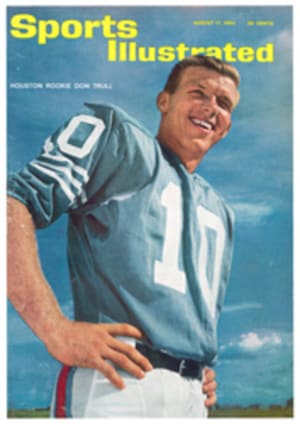
STARS THAT SHINE WITH TOKYO GOLD
Who won?" yelled Malin Burnham, the skipper of Star boat No. 4749 as he headed into the dock at Chicago's Jackson Park Yacht Club after the last race. "We don't know yet," the crowd on the dock screamed back at him. "We think you did."
"Who won?" hollered Gary Comer at another group as he guided his Star No. 4887 toward the beach. Once again the response was indefinite. "They say it may have been you," yelled the crowd. But when the complex Olympic scores that delve deep into logarithms to find the best sailor afloat were all tallied up, neither Burnham nor Comer proved the winner. That honor went to a quiet, systematic sailor named Richard Stearns, who had crossed the line behind 12 other boats in the last race. He was already gloomily loading his boat on its trailer, feeling like a beaten man, when a sweating official ran up, race results in hand. "Congratulations, Dick," he panted. "You won." "Wow," said Stearns, glancing in unbelief at the score sheet that revealed he had led the fleet by a mere 21 points in several thousand, "that was close."
Close indeed. But the cliffhanger finish of the final Star class trials last week was characteristic of the all-out effort the U.S. yachtsmen have been putting into their 1964 Olympic push for more than a year. The Star class is only one of five Olympic classes, but it is the only one in which the U.S. has won more than two gold medals over the years. This year, however, the Olympic Committee, aided and goaded by an organization known as the U.S. International Sailing Association, is determined to pan out the gold in all the classes. Toward that end it has put together an unofficial master plan under which strong classes like the Stars and the 5.5s have been drained of some of their surplus to lend new strength to such weaker classes as the Dragons, Finns and Flying Dutchmen.
Sailmaker Lowell North, who is one of the best Star class sailors in the world, for example, was not there in Chicago last week. He had instead been "encouraged" (i.e., drafted) by the USISA to lend his enormous talents to the Dragon class, in which the American entry finished a dismal 10th at Rome in 1960. North took the hint, had a brand-new Dragon built, turned up with it at the Long Beach, Calif. Dragon trials a month ago, found it didn't meet the class rules, borrowed another boat and went out to win five of the seven races in the final trials.
Another U.S. class that badly needed a transfusion of talent to bring it up to par with the Europeans is the Flying Dutchmen. These are slim, swift planing boats whose crewmen must swing outboard like circus performers on a trapeze to give them stability. Up to a year ago, midwestern boatbuilder Buddy Melges, who three times won the North American sailing championship, cared only for the blunt-ended, slippery scows that he builds and races and for the iceboats he sails in winter on Wisconsin's frozen lakes. But a hint from the Olympic Committee sent Buddy into the strange FD's with a vengeance that paid good dividends when he finally got to the class Olympic trials off Sandy Hook a month ago. All last year Melges practiced in the new boat. He sailed all fall and spring in every race he could, and even relinquished his iceboat in the winter if there was enough open water to launch the FD. The result was a brilliant win at the Olympic trials and another potential gold medal for the U.S.
Meanwhile, despite their donations of blood, the strong U.S. classes looked stronger than ever. Among the 66 sailors who turned up in Chicago last week to compete for the right to represent the U.S. in Stars, Dick Stearns was but one of seven former world champions, and nearly every other skipper was either a national or local champ. As Paul Smart, the president of the Star Class Association, said, "It was as fine a collection of talent as anyone had seen anywhere." The closeness of the competition was attested to by the fact that Stearns himself managed to finish first in only one of the seven races. His overall victory was the result of sailing so consistently expert that not even two wins by current World Champion Joe Duplin could put him out of the running.
Stearns did slip badly in one race, but fortunately the Olympic scoring system permits each skipper to throw the results of his worst race right out of the score sheet. Stearns's lapse took place in the fourth race. It was on Wednesday, and the surface of Lake Michigan had been chopped into a fine mess by the kind of breeze that suits Stearns to a T. "I hope it blows like a purple S.O.B.," he had said the night before. But on race day his good luck was countered by surprising bad judgment. For one thing, Sailmaker Stearns had put on the wrong main, an extra-flat sail that didn't suit the conditions. For another, he got caught on the wrong end of a wind shift, and by the time the race ended he was tucked far back into the fleet in 22nd place. That used up his permitted bad race, and from then on he seemingly had no choice but to do well. In the fifth race he sailed through the fleet and got a third. In the sixth he took a first and came ashore waving a little green lizard some rivals had given him during the Western Hemisphere Championships in New Orleans last April. "Actually," Dick explained later, "they gave it to me hoping it would serve as a hex." But the hex hexed the hexers. Stearns won the championships, and ever since he has carried the lizard aboard his boat.
The lizard's hex seemed to be working both ways at Chicago, and on the last day of racing, when Stearns finished 13th, it obviously was against him. But not enough to hurt. That 13th place just sufficed to give him the narrow win that tagged him for Tokyo. Actually, the committee didn't have to pick Stearns. Under Olympic sailing rules, it can pick anyone it wants regardless of who wins the so-called final trials. Thus, the man it picked to join Stearns as alternate was neither of the men he had beaten so closely. It was James (Ding) Schoonmaker, a man who finished behind them all but—more importantly—a man who could, if necessary, step into either a Finn or a Flying Dutchman and sail it skillfully. This, too, is part of the committee's master plan to have the strongest possible sailing task force in Tokyo. When the final trials are completed next month, the U.S. contingent will include skippers like Lowell North, Dick Stearns and Buddy Melges who not only can sail but who are skilled enough in the nautical arts to cut sails and even build new boats if necessary.
PHOTO
Winner Stearns makes a final adjustment.
PHOTO
TONY TRIOLO
Dick Stearns (Sail No. 4841) leads his rivals Gary Comer (4887) and Malin Burnham (4749) to a windward mark in Chicago's Star class trials.

